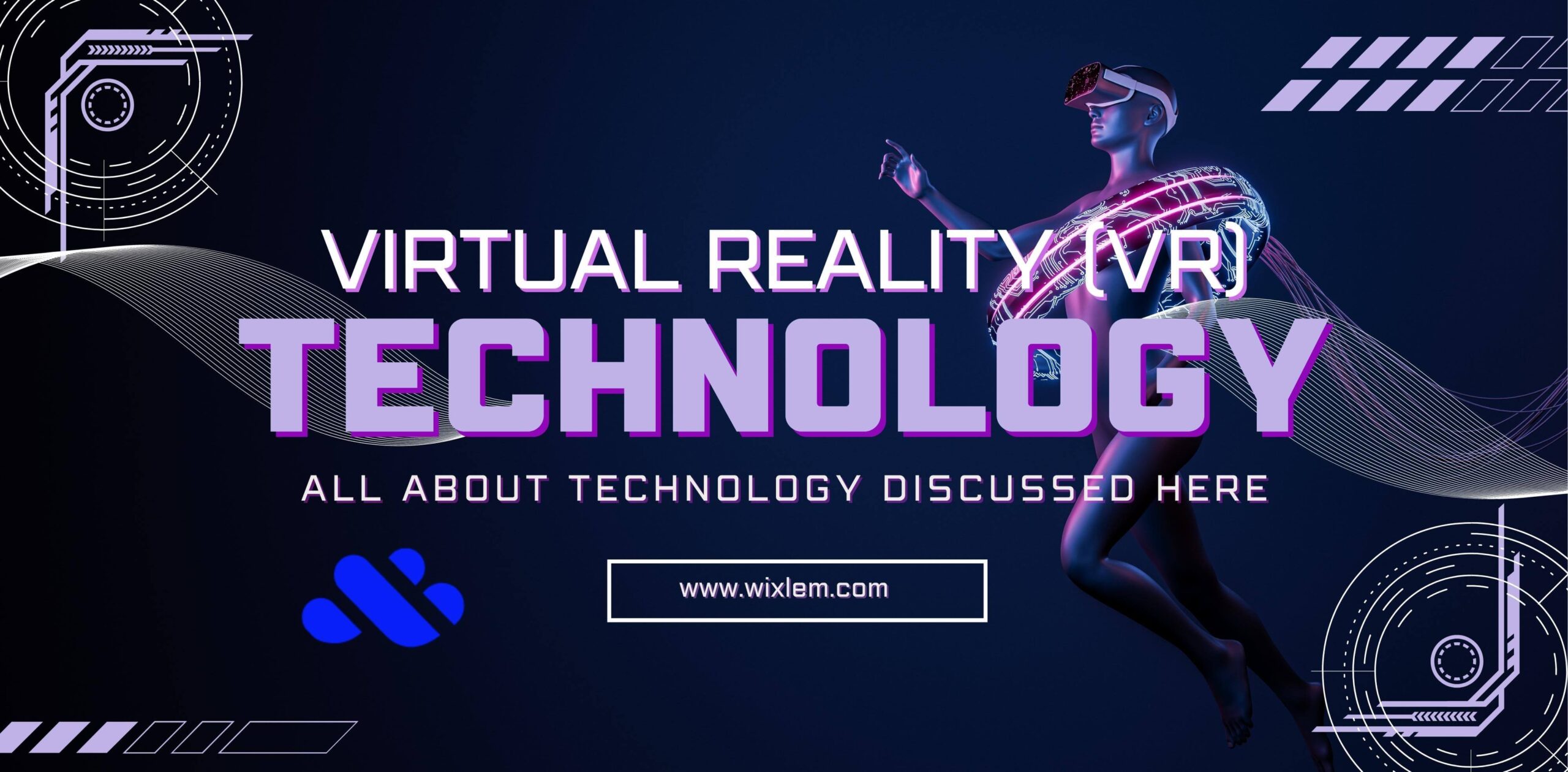Throughout my career in marketing, I have continuously been energized about new technologies that enhance the client experience. These technologies can help businesses connect uniquely and engage with their target audience. (AR) Technology One innovation that has been gaining attention recently is the concept of enhanced reality (AR). In this article, I will explore the future of promoting with Augmented Reality (AR) Innovation, its benefits, challenges, and how you’ll be able to actualize it in your showcasing strategy.
Introduction to Augmented Reality (AR) Technology
AR is a technology that overlays digital content on the real world. It uses a camera, sensors, and software to recognize and track real-world objects and add digital content. This innovation has been around for a while, but recently gained prominence due to advances in equipment and programs.
AR differs from Virtual Reality (VR), which creates an entirely immersive digital environment. AR, on the other hand, adds digital content to the real world, creating an interactive experience that enhances the real world.
Understanding the Future of Marketing with AR
AR marketing is bright. Markets and Markets expect the AR market to grow from $3.5 billion in 2017 to $198 billion by 2025. This growth is driven by the increasing adoption of AR technology in various industries, including marketing.
AR technology allows businesses to create immersive experiences that engage customers and enhance brand experience. Customers can interact with products and services in a whole differently shaped way, increasing engagement, loyalty, and sales.
Benefits of Augmented Reality in Marketing
AR in marketing has several benefits:
-
It can enhance the customer experience by providing an interactive, engaging, memorable, and shareable experience.
-
It can increase brand awareness by creating a buzz around the brand and its products.
-
It can increase sales by allowing customers to try products before buying them, increasing their confidence and trust.
AR can also provide valuable data and insights into customer behaviour, preferences, and engagement. This data can be used to improve marketing strategies and create more personalized and targeted campaigns.
How to Create Augmented Reality (AR) Technology Examples
Creating Augmented Reality (AR) Technology examples can be challenging, but several tools and platforms can make the process easier. One such tool is Unity, a game engine that creates AR experiences. Another tool is Vuforia, an AR development platform allowing developers to develop AR apps for mobile devices.
To create an AR experience, you must start with a concept or idea. This can be anything from a product demo to a virtual location tour. Once you have a picture, you must create a 3D model or image that can be used as an AR marker. This marker is what the AR app recognizes and uses to overlay digital content.
Next, you need to create digital content overlayed on the marker. This can be anything from videos and animations to interactive games and quizzes. Finally, you need to test the AR experience to ensure it works correctly and provides a seamless experience for the user.
Examples of Augmented Reality in Marketing
There are several examples of AR in marketing that have engaged customers and enhanced brand experience. One of these apps is the IKEA Place app. This allows customers to place virtual furniture in their homes to see how it looks before buying it. Another example is the Sephora Virtual Artist app, which allows customers to try on makeup virtually before buying it.
Other examples include the Coca-Cola Magic app, which uses AR to bring Coke packaging to life, and the BMW I Visualiser app, which allows customers to see how the BMW i3 or i8 would look in their driveway.
Best Practices for Developing Augmented Reality (AR) Technology in Marketing
When developing Augmented Reality (AR) Technology in marketing, there are several best practices to remember:
-
AR experiences should be simple and intuitive to use. It should provide clear instructions and feedback to the user.
-
AR experiences should be engaging and interactive, providing a memorable experience for the user.
-
AR experience should be relevant to the brand and its products, providing value to the user.
Other best practices include:
-
Designed for mobile devices.
-
Optimizing the AR experience for different lighting conditions.
-
Testing the AR experience thoroughly before launch.
Innovative Augmented Reality Samples for Marketing
Innovative AR marketing examples can inspire your own AR campaigns. One such sample is the Pepsi Max AR Unbelievable Bus Shelter, which used AR to create an interactive experience at a bus shelter. Another sample is the National Geographic AR experience, which used AR to bring the magazine’s pages to life.
Other innovative AR samples include the WWF Endangered Emoji campaign, which used AR to raise awareness of endangered species. In addition, the Adidas Originals AR Unite All Originals campaign, which used AR to create an interactive experience in a store window.
How to Implement Augmented Reality in Your Marketing Strategy
Implementing AR into your marketing strategy requires careful planning and execution. First, you need to identify your AR campaign goals and objectives. This can be anything from increasing brand awareness to driving sales. Second, you need to identify the target audience for your AR campaign and determine how you will reach them.
Third, you must develop an AR concept relevant to your brand and its products. This can involve working with an AR developer or using AR development tools to create your AR experience. Fourth, you must launch and promote your AR campaign using social media, email, and other channels to reach your target audience.
Challenges of Augmented Reality in Marketing
While AR technology can provide many benefits to marketers, there are also several challenges to consider. One challenge is the cost of developing AR campaigns, which can be significant. Another challenge is the need for high-quality hardware and software to ensure a seamless AR experience.
Other challenges include the need for technical expertise in AR development and the need to continually innovate and improve AR campaigns. This is to stay ahead of the competition.
Augmented Reality Marketing Tools and Platforms
Businesses can build and deploy augmented reality (AR) campaigns using expanded reality marketing tools and platforms. Each platform has unique capabilities, price points, and features. Unity is a common platform for producing 3D animations and images for AR campaigns. Another well-known AR platform is Vuforia, which utilizes computer vision technologies to track and detect things in the environment. Developers can construct augmented reality (AR) applications for various platforms with the open-source AR framework ARToolKit. Last but not least, ARKit is an immersive reality platform created by Apple and optimized for iOS devices.
Augmented Reality Marketing Services
Businesses can choose from AR marketing providers’ various AR campaign development and management options. These services can aid companies in managing and promoting campaigns and developing AR. Blippar is an AR marketing platform that gives companies the resources to build AR experiences that appeal to customers and increase sales. Another AR marketing provider, Zappar, provides companies with various AR options, such as face tracking, image recognition, and 3D object tracking. To allow customers to see how things will appear and feel before purchasing. Augment has developed a range of AR marketing services.
Courses for Learning AR Marketing
For individuals interested in learning more about AR marketing, numerous online courses are accessible. AR’s creation, design, and marketing tactics are only a few topics discussed in these courses. The Unity AR Marketing Masterclass is a thorough course covering everything from AR fundamentals to cutting-edge development methods. Another fantastic choice that covers the principles of augmented reality marketing and offers valuable insights into the creation of augmented reality campaigns is the Coursera course on augmented reality marketing. Last but not least, LinkedIn Learning offers a short program called “AR Marketing Basics”, which introduces AR marketing and some possible uses.
Conclusion
Organizations’ use of Augmented Reality (AR) Technology has the potential to change as it develops quickly. By employing AR marketing tools, platforms, and services, businesses can give customers immersive and memorable experiences that increase engagement, conversions, and brand loyalty. Companies must carefully assess their objectives, financial constraints, and target market to succeed in AR marketing. They must also select the most appropriate tools and services to serve these needs. With the correct strategy and know-how, businesses can use augmented reality (AR) to get a competitive edge and stay on top of the curve in today’s quickly evolving marketing environment.
The following post you will like:
Top 5 Life-Changing Artificial Intelligence Trends
Augmented Reality in the Future of Marketing
FAQs
What is Augmented Reality (AR) Technology?
Augmented Reality (AR) Technology overlays digital content in the real world. It uses a camera, sensors, and software to recognize and track real-world objects and add digital content.
What is augmented reality (AR) technology in marketing?
Businesses can use Augmented Reality (AR) Technology in their marketing strategies, such as creating interactive product demonstrations, providing virtual try-on experiences, or offering location-based promotions. AR technology can also enhance brand recognition and loyalty by creating memorable and engaging customer experiences.
How can businesses use augmented reality (AR) technology in their marketing strategies?
Businesses can use augmented reality (AR) technology in their marketing strategies, such as creating interactive product demonstrations, providing virtual try-on experiences, or offering location-based promotions. AR technology can also enhance brand recognition and loyalty by creating memorable and engaging customer experiences.
How does augmented reality (AR) technology improve customer engagement in marketing?
Augmented Reality (AR) Technology improves customer engagement in marketing by creating interactive and immersive experiences that capture customers’ attention and keep them engaged. AR technology can be used to provide customers with personalized and engaging experiences that lead to increased brand loyalty and sales.
How does augmented reality (AR) technology impact marketing future?
Augmented Reality (AR) innovation will enable marketers to reach clients in a new and innovative way. A personalized and immersive AR experience can increase brand recognition and loyalty. Businesses across various industries will increasingly rely on Augmented Reality (AR) Technology as it develops.



